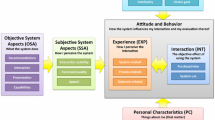Abstract
Rapid development of smart devices has lead people to be able to read books through their devices anytime and anywhere. Even though its popularity, e-books have ingrained disadvantages such as: (1) It does not have an expandable scheme that allows readers to add multimedia contents or their emotional expressions to books. (2) It is not easy to add multimedia resources as an author. (3) Due to the variety of resolutions on devices, the current ebook format tends to be uncomfortable for readers. The user constantly has to zoom in by pinching the screen when reading on a small device. (4) It is not easy to navigate contents within an e-book because of the absence of an e-book linking feature. To tackle the above mentioned problems, we design and use an external domain-specific language (DSL) within our research. We propose a collaborative social tagging framework for e-books. The goals of this paper are (1) to define a model of an evolvable social resources taggable book (modeling of collaborative e-book), (2) to make readers read rich content e-book easily regardless of their type of devices as well as screen size. (Responsiveness), and (3) to provide e-book resources with the Representational State Transfer (RESTful) address style by which other systems can identify the self-descriptive resources of an e-books (interoperability). The experimental results show that e-book featured social tagging makes readers more interested in reading e-books rather than plain e-books. Further work includes user experience (UX) improvement, and a visual DSL approach with which the authors could write books easier.













Similar content being viewed by others
References
Amazon Kindle. https://kindle.amazon.com/faq#PublicNotes0. Accessed 18 Oct 2014
AngularJS — Superheroic JavaScript MVW Framework. https://angularjs.org/. Accessed 21 Nov 2014
BibSonomy :: home. http://www.bibsonomy.org/. Accessed 10 Mar 2015
Bootstrap ·The world’s most popular mobile-first and responsive front-end framework. http://getbootstrap.com/. Accessed 21 Nov 2014
Cook JE and K (2013) Building a community of Readers: Social Reading and an Aggregated eBook Reading App for Libraries. Libr. Lead Pipe. http://www.inthelibrarywiththeleadpipe.org
Cordón-García J-A, Alonso-Arévalo J, Gómez-Díaz R, Linder D (2013) Social reading: Platforms, applications, clouds and tags. Elsevier
Daylamani Zad D, Agius H (2010) An MPEG-7 profile for collaborative multimedia annotation. In: Agius H (ed) Angelides rios C. Handb. MPEG Appl, Wiley, pp 263–291
Digg - What the Internet is talking about right now. http://digg.com/. Accessed 10 Mar 2015
Digital Public Library of America. http://dp.la/. Accessed 10 Mar 2015
Eaton K (2014) Mobile apps bring history alive. New York Times
Europeana - Homepage. http://www.europeana.eu/portal/. Accessed 10 Mar 2015
Feedbooks | Free eBooks and Best Sellers. http://www.feedbooks.com/. Accessed 10 Mar 2015
Free Books : Download & Streaming : eBooks and Texts : Internet Archive. https://archive.org/details/texts. Accessed 10 Mar 2015
Ghosh D (2011) DSLs in action. Manning, Greenwich, Conn
Goodreads | Recent Updates. https://www.goodreads.com/. Accessed 18 Oct 2014
Haml. http://haml.info/. Accessed 18 Oct 2014
Hart M Project Gutenberg. In: Proj. Gutenberg. http://www.gutenberg.org/. Accessed 18 Sep 2014
Jade - Template Engine. http://jade-lang.com/. Accessed 18 Oct 2014
Kasdorf B (2011) EPUB 3: Not your Father’s EPUB. Inf Stand Q 4–11
Kiu C-C, Tsui E (2011) TaxoFolk: a hybrid taxonomy–folksonomy structure for knowledge classification and navigation. Expert Syst Appl 38:6049–6058. doi:10.1016/j.eswa.2010.11.014
Kramer D, Clark T, Oussena S (2010) MobDSL: A Domain Specific Language for multiple mobile platform deployment. Networked Embed. Syst. Enterp. Appl. NESEA 2010 I.E. Int. Conf. On. pp 1–7
Langlois B, Jitia C-E, Jouenne E (2007) DSL classification. OOPSLA 7th Workshop Domain Specif. Model
Links, pointers, bookmarks, highlights: How should .epub do it? | FrontMatters. http://frontmatters.com/2008/03/29/links-pointers-bookmarks-highlights-how-should-epub-do-it/. Accessed 19 Oct 2014
ManyBooks.net - Ad-free eBooks for your iPad, Kindle, or eBook reader. http://manybooks.net/. Accessed 10 Mar 2015
Marcotte E (2011) Responsive web design. Editions Eyrolles pp 34–96
Mathes A (2004) Folksonomies-cooperative classification and communication through shared metadata. Comput Mediat Commun 47:1–13
Ovadia S (2014) Markdown for librarians and academics. Behav Soc Sci Libr 33:120–124
Peleteiro A, Rey-López M, Martín-Pernas JA, et al. (2011) TAGGEMENDOR: Relating multimedia using folksonomies. Consum. Electron. ICCE 2011 I.E. Int. Conf. On. IEEE, pp 221–222
PLY (Python Lex-Yacc). http://www.dabeaz.com/ply/. Accessed 21 Nov 2014
Reading Life. http://www.kobo.com/readinglife#ereaders. Accessed 18 Oct 2014
Readmill Epilogue. https://readmill.com/. Accessed 18 Oct 2014
Ribière V, Walter C (2012) A new generation of knowledge books: K-Ebook 2.0. Int Proc Econ Dev Res 35
Standard ECMA-376. http://www.ecma-international.org/publications/standards/Ecma-376.htm. Accessed 18 Oct 2014
Standards | OASIS. https://www.oasis-open.org/standards#opendocumentv1.2. Accessed 18 Oct 2014
Technorati. http://technorati.com/. Accessed 10 Mar 2015
Tilkov S, Vinoski S (2010) Node. js: using JavaScript to build high-performance network programs. Internet Comput IEEE 14:80–83
Timeline - Art Museum. In: App Store. https://itunes.apple.com/us/app/timeline-art-museum/id562792427?mt=8. Accessed 22 Sep 2014
Timeline - U.S. History. In: App Store. https://itunes.apple.com/us/app/timeline-u.s.-history/id552887553?mt=8. Accessed 22 Sep 2014
Venugopal R, Subbarayan AP (2014) Method and system for inserting immersive contents into eBook
Vincent LC, et al. Electronic Content Management and Delivery Platform. Patent filed as US 13/644,731
W3C Document Object Model. http://www.w3.org/DOM/. Accessed 21 Nov 2014
Webber J, Parastatidis S, Robinson I (2010) REST in practice. O’Reilly, Farnham, Sebastopol
Welcome to DailyLit. https://www.dailylit.com/. Accessed 10 Mar 2015
Welcome to Flickr - Photo Sharing. https://www.flickr.com/. Accessed 10 Mar 2015
Welcome to Open Library (Open Library). https://openlibrary.org/. Accessed 10 Mar 2015
EPUB - Wikipedia, the free encyclopedia. http://en.wikipedia.org/wiki/EPUB. Accessed 19 Oct 2014
Yoshida T, Irie G, Satou T, et al. (2012) Improving item recommendation based on social tag ranking. Springer
Author information
Authors and Affiliations
Corresponding author
Rights and permissions
About this article
Cite this article
Yoo, HS., Kim, SW. ESOTAG: E-book evolution using collaborative social tagging by readers. Multimed Tools Appl 75, 12795–12813 (2016). https://doi.org/10.1007/s11042-016-3404-4
Received:
Accepted:
Published:
Issue Date:
DOI: https://doi.org/10.1007/s11042-016-3404-4




